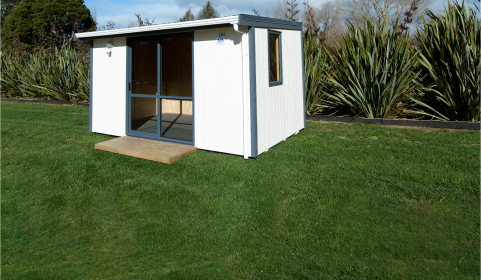Introduction
In the picturesque landscapes of New Zealand, the use of portable cabins has become a versatile and innovative solution for various space-related needs. These self-contained, transportable structures have gained popularity due to their convenience, mobility, and adaptability to diverse settings. This article delves into the manifold applications and advantages of portable cabins in New Zealand, highlighting their impact on industries and communities.
Benefits of Portable Cabins
Convenience and Mobility
Portable cabins offer unmatched convenience and mobility. With their modular design, they can be easily transported to different locations, making them an ideal choice for temporary setups or changing requirements.
Cost-Effectiveness
In a dynamic economy like New Zealand’s, cost-effectiveness is crucial. Portable cabins provide an affordable alternative to traditional construction, saving both time and money.
Quick Installation
Unlike conventional buildings, portable cabins can be set up in a matter of days. This rapid installation makes them perfect for urgent needs or time-sensitive projects.
Versatility
From pop-up shops to temporary classrooms, portable cabins can be tailored to serve various functions. Their versatility allows businesses and organizations to adapt to evolving demands seamlessly.
Applications of Portable Cabins in New Zealand
Construction Sites
Portable cabins are a common sight on construction sites. They serve as on-site offices, meeting spaces, and even rest areas for workers, enhancing efficiency and organization.
Tourism and Hospitality
In New Zealand’s thriving tourism industry, portable cabins offer additional accommodation options for travelers. They can be set up in scenic locations, providing a unique and immersive experience.
Remote Workspaces
The rise of remote work has led to a demand for quiet and productive workspaces. Portable cabins can be transformed into home offices, providing a dedicated environment away from domestic distractions.
Emergency Shelters
In times of natural disasters, portable cabins can serve as emergency shelters. Their quick deployment and functional design make them invaluable in providing temporary housing and aid centers.
Factors to Consider When Using Portable Cabins
Regulations and Permits
Before setting up portable cabins, it’s essential to be aware of local regulations and obtain the necessary permits. Compliance with building codes ensures a smooth process.
Size and Space Requirements
Choosing the right size of the cabin is vital to meet specific requirements. Factors such as the number of occupants, intended use, and available space must be considered.
Weather Conditions
New Zealand’s climate can be unpredictable. Proper insulation, ventilation, and weather-resistant features are crucial to maintain a comfortable interior environment.
Aesthetics and Design
Portable cabins don’t compromise on aesthetics. They can be customized to blend seamlessly with their surroundings, ensuring they don’t disrupt the visual appeal of the area.
Sustainability and Eco-Friendly Aspects
Portable cabins are often designed with sustainability in mind. They can incorporate eco-friendly materials, energy-efficient technologies, and even renewable energy sources.
Maintaining and Upgrading Portable Cabins
Maintenance is key to extending the lifespan of portable cabins. Regular inspections, repairs, and upgrades ensure their continued functionality and safety.
Challenges and Solutions
Insulation and Climate Control
Maintaining consistent temperatures within portable cabins can be a challenge. Adequate insulation and climate control systems are essential for year-round comfort.
Durability in Harsh Environments
New Zealand’s rugged terrain and weather conditions can test the durability of portable cabins. Reinforced construction and robust materials help them withstand these challenges.
Security Concerns
Security is a priority, especially when the cabins are used for accommodation or valuable storage. Implementing robust locking systems and security measures is imperative.
Comparing Portable Cabins with Traditional Structures
Portable cabins offer several advantages over traditional buildings, including cost, mobility, and reduced environmental impact. However, they might have limitations in terms of space and permanence.
Future Trends of Portable Cabins
As technology and design continue to evolve, portable cabins are likely to become even more efficient, sustainable, and adaptable. Innovations could include smart features, advanced materials, and enhanced energy solutions.
Conclusion
In New Zealand, the use of portable cabins has revolutionized the way spaces are created and utilized. Their flexibility, cost-effectiveness, and diverse applications make them an integral part of various industries and scenarios. If you’re looking to experience the benefits of portable cabins firsthand, don’t hesitate to get in touch with Roommate Cabins. With their expertise and commitment to providing top-notch solutions, they can help you find the perfect portable cabin for your needs.
FAQs
- Are portable cabins suitable for year-round use in New Zealand’s climate? Yes, portable cabins can be equipped with proper insulation and climate control systems to ensure comfort throughout the year.
- Can I customize the design of a portable cabin to match my preferences? Absolutely, portable cabins offer customization options, allowing you to tailor the design to your specific aesthetic and functional requirements.
- Are portable cabins a sustainable choice for construction? Yes, many portable cabins are designed with sustainability in mind, incorporating eco-friendly materials and energy-efficient technologies.
- What are the regulations regarding the use of portable cabins in New Zealand? Regulations can vary based on location and purpose. It’s important to research local building codes and obtain the necessary permits.
- How long does it take to install a portable cabin? The installation time can vary depending on the size and complexity of the cabin, but they are generally quicker to set up compared to traditional buildings.
